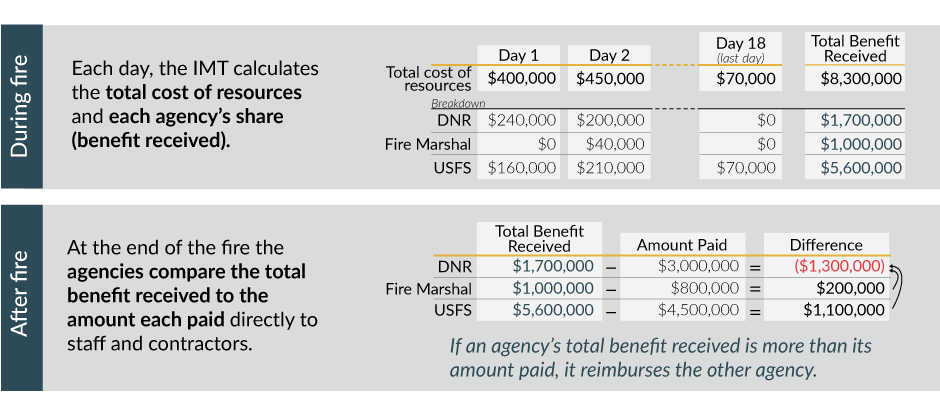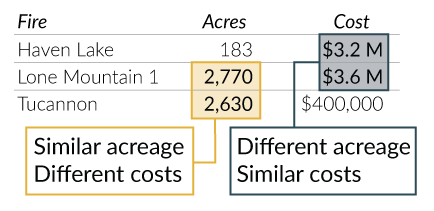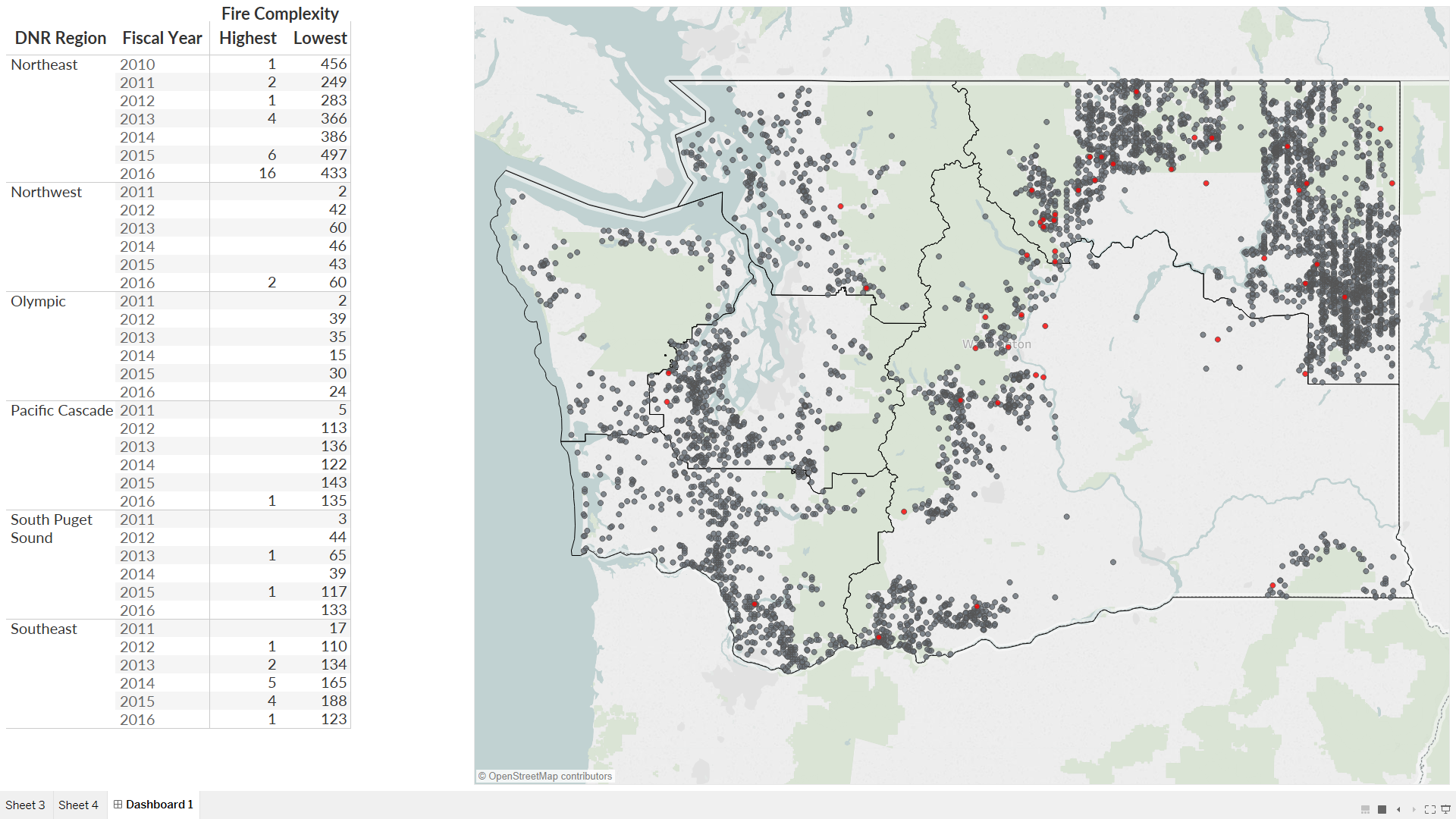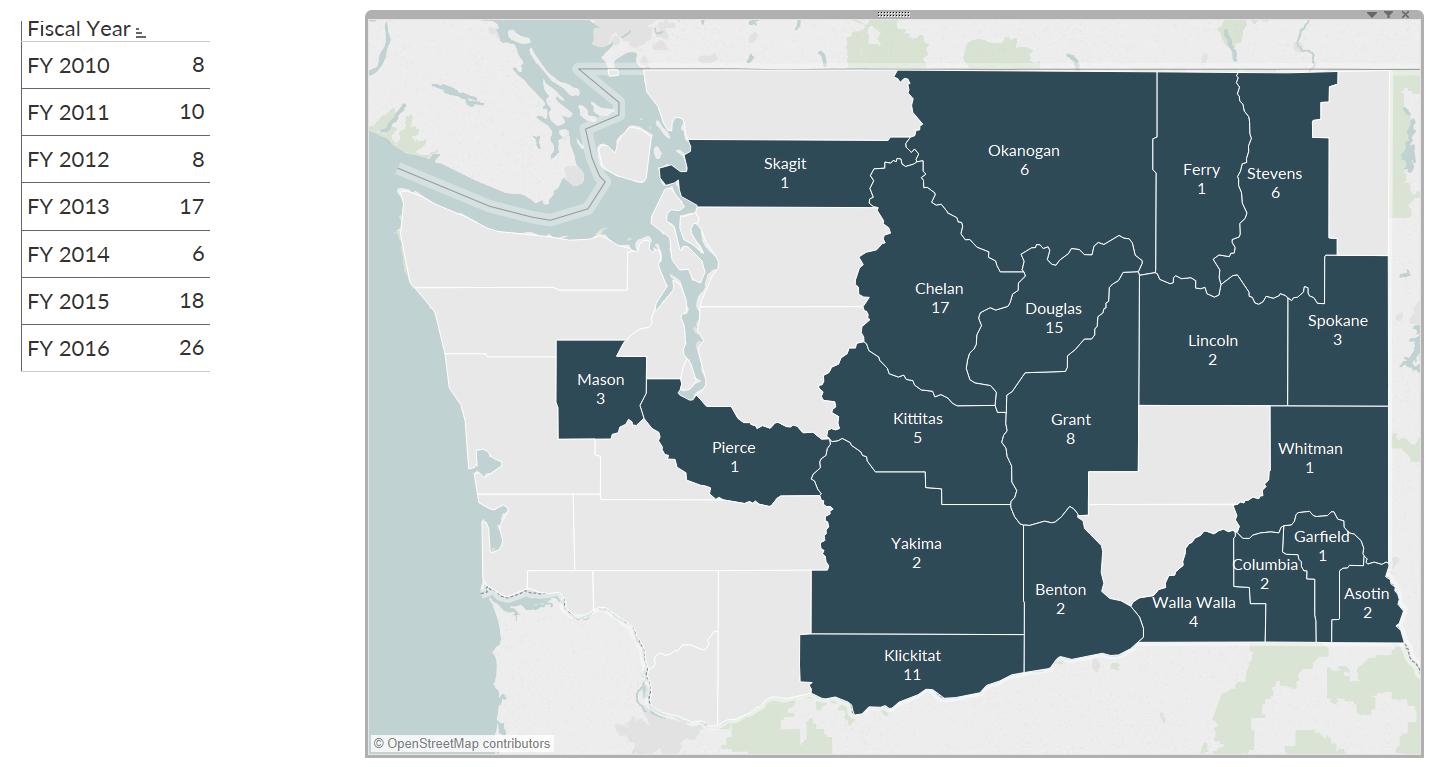The Legislature asked for information about fire suppression funding and costs for
the Department of Natural Resources (DNR) and the State Fire Marshal (Fire Marshal).
Below is a review of how each agency estimates costs of fires or mobilizations, the
types of expenditures included, and whether expenditures are related to fires.
Agencies have different approaches for estimating costs of fires
DNR and the Fire Marshal routinely have expenditures that exceed their base
appropriations for fire suppression or mobilization. The Legislature fully funds the
work with supplemental and special appropriations. This approach is used by other
western states and British Columbia.
Both agencies use a combination of actual and estimated expenditures in their
supplemental requests:
- DNR manually compiles estimates from at least four different data systems,
and makes adjustments based on the professional judgment of division and regional
staff. This process is complicated by DNR's approach to
documenting incident codesDNR may assign multiple codes
to single fire and lacks a list of all codes (see Section
5). The estimates do not include any reimbursements expected from the cost
share for large fires or fire complexes. A complex is multiple fires combined under
a single incident command structure.
- The Fire Marshal creates estimates from spreadsheets that track the
resources for each mobilization. These spreadsheets are based on time sheets,
resource orders, agreements, and other source documentation.
Like all state agencies, DNR and the Fire Marshal submit their initial supplemental
budget requests in September, before the end of the fire season. At this point, much
of the information is incomplete. As the agencies update the information, the costs of
some fires change, even if the overall fire season estimate stays relatively stable.
Reasons for the changes include updating estimates with actual costs, shifting costs
between fires within a fire A complex
is multiple fires combined under a single incident commandcomplex,
and changes to the state's portion of the cost share during the Cost share calculation and supporting documentation are
reviewed for accuracy after the incident. See Section 2post-incident
review.
Agencies have procedures to track actual fire costs separately from other
expenditures
DNR and the Fire Marshal each use budget codes and management procedures to track
fire-related expenditures and help ensure that costs can be associated with a fire,
fire activity (e.g., Strategically
positioning resources before a fire.prepositioning), or
mobilization. For example:
- Each agency has a set of high-level codes that indicate expenditures are related
to fire or mobilization.
- Each agency assigns a code to a fire, fire complex, mobilization, or other
activity. Expenditures, including agency staff time, are charged to the code. Some
DNR fires have multiple codes, as discussed in
Section 5.
- For a large fire, each resource assigned to the fire is given a unique resource
order number. For example, if a contractor provided two engines with crews, each
would have its own number. The incident management team checks the number at the
fire for accountability and tracking. Resources cannot be paid without the resource
order number.
- Agency staff review invoices from contractors against documentation from the fire
before payment. JLARC staff compared a sample of expenditures against source
documentation and was able to verify the costs.
DNR and the Fire Marshal spent $434 million on fire-related activities between
fiscal years 2010 and 2016
Fire-related activities include DNR's response to fires and false alarms, Strategically positioning resources before
a fire.prepositioning resources based on weather and fire
conditions, and the Fire Marshal's coordination of state mobilizations. Costs include
firefighters and other personnel, aircraft, equipment, and camp supplies.
Exhibit 3.1: Annual spending by DNR and the Fire Marshal between fiscal years 2010
and 2016 (dollars in millions)
| Agency |
2010 |
2011 |
2012 |
2013 |
2014 |
2015 |
2016 |
Total |
Notes |
| DNR |
$26 |
$16 |
$13 |
$47 |
$31 |
$89 |
$146 |
$368 |
- Major fund sources are State General Fund, the Disaster Response Account,
and the Budget Stabilization Account.
- Contracted goods/services and salaries/benefits are the largest
expenditure categories.
|
| Fire Marshal |
$2 |
$4 |
$4 |
$12 |
$3 |
$18 |
$22 |
$65 |
| Total |
$28 |
$21 |
$17 |
$59 |
$34 |
$107 |
$168 |
$434 |
Source: Agency Financial Reporting System (AFRS), dollars in millions. The totals
may not match the sum of individual parts due to rounding. Fiscal years are July 1
through June 30, so fiscal year expenditures reflect fire activity in different
calendar years. For example, expenditures for a fire in August 2015 are included in
fiscal year 2016.
Majority of spending is on contracted goods and services, including contracts with
local fire agencies
DNR and the Fire Marshal contract for services including suppression, fire camp
operations, and equipment. Contracts — including those with local fire agencies —
account for the largest portion of spending. Salaries and benefits are the second
largest. For the Fire Marshal, most of the money spent on salaries and benefits is for
volunteer firefighters who are temporarily paid as state employees during a
mobilization,
Exhibit 3.2: Fire suppression and mobilization spending is largely contracts,
salaries, and benefits
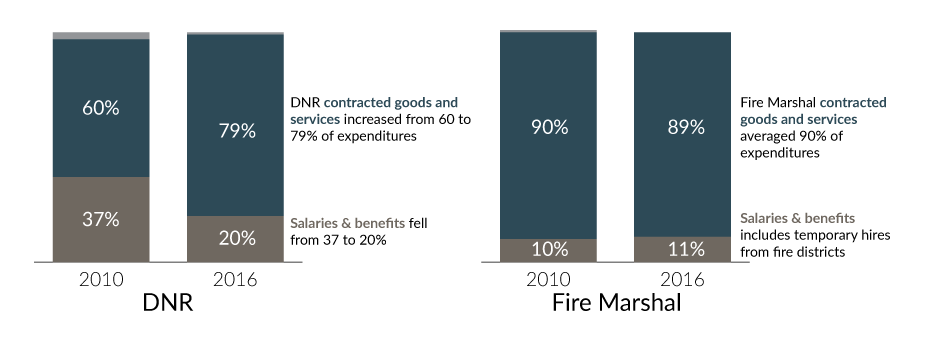
Source: Agency Financial Reporting System (AFRS) data, fiscal years 2010-2016.
DNR and the Fire Marshal establish agreements and rates with contractors before each
fire season begins. In 2017, they began to use consistent wage and equipment rates.
This avoids creating an incentive for contractors to work with only the higher-paying
agency. DNR and the Fire Marshal also are beginning to use a federal system with lists
of pre-approved contractors and negotiated rates.
Established procedures and controls are intended to prevent DNR and the Fire Marshal
paying the same contractor for the same work
Contractors can work for different agencies at different times during a fire. There
are procedures and controls in place at the fire intended to prevent a contractor from
being paid by both DNR and the Fire Marshal for the same work. For example, the
agencies use different resource order numbers when hiring contractors, and agency
staff at the fire verify the hours worked and appropriate coding. Also, the resource
order number changes at each fire.
Some expenditures are recouped from other agencies and responsible parties
The state has three ways to recoup suppression and mobilization expenditures:
reimbursement from federal or other state governments, DNR's recoveries from private
parties, and federal fire management assistance grants.
Exhibit 3.3: DNR and the Emergency Management Division (EMD) report that the state
has recouped $72 million to date between fiscal years 2010 and 2016 for fire
suppression
| Source |
Description |
Credited to |
Amount Received (FY10-16) |
| Reimbursement from federal and state
partners (e.g., Oregon) |
- Reimbursement under cost sharing agreements
- Reimbursement for responses to out of state fires
|
- DNR receives reimbursement and recovery if it is paid in the same fiscal
period as the fire.
- Reimbursement received after the fiscal period is deposited into the State
General Fund balance.
|
$34.6 million |
| Recoveries from private
parties that negligently start fires |
- May be paid from homeowner's insurance policies
- May not recover full cost of suppression
|
$2.9 million |
| Fire Management Assistance Grants
(FMAG) from the Federal Emergency Management Agency (FEMA) |
- Reimburse 75% of eligible expenditures
- Limited to fires that threaten to become a major disaster: 37 fires
declared to be FMAG eligible between FY 2010-16
|
Deposited directly into the State Disaster
Response Account. |
$34.5 million |
Sources: Reimbursement and recovery figures provided by DNR, FMAG data provided by
the Emergency Management Division (EMD).
Costs may be recouped after the fiscal period in which the fire took place
There are multiple reasons that reimbursements may be submitted after the fiscal
period in which the fire occurred. For example, fires can happen near the end of the
fiscal year, agencies may need to review cost share documentation, or a cost recovery
may be litigated. The time lag for reimbursements and recoveries makes it difficult to
determine the actual cost of any fire season or fire.
The Emergency Management Division (EMD) of the Washington Military Department is
responsible for submitting FMAG applications for the state. As of June 2017, the state
had received partial FMAG reimbursement ($3.8 million) for fires that took place in
the 2014 through 2016 fire seasons. EMD has not yet submitted some requests and others
are awaiting FEMA review and approval. EMD reports that requests may be delayed due to
the complexity of the application, number of fires, volume of records, delays in
federal documentation, and competing operational responsibilities.
Local governments also may receive FMAG reimbursement. EMD has processed, and FEMA
has paid, reimbursements for some local fire agencies and governments.
Previous Section | Next
Section
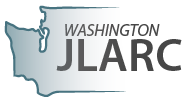

 Initial response: The closest available state, local, or federal
agency responds, regardless of jurisdiction
Initial response: The closest available state, local, or federal
agency responds, regardless of jurisdiction 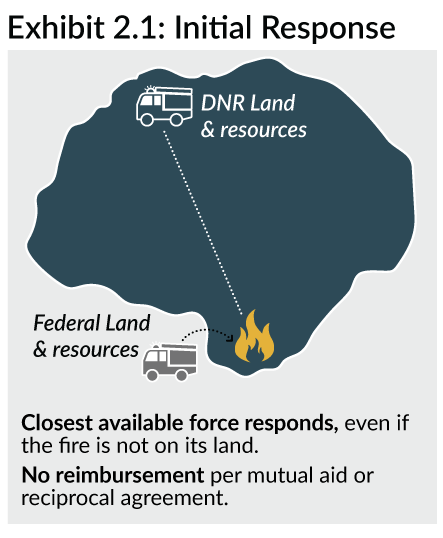 Initial response:
Response provided without reimbursement
Initial response:
Response provided without reimbursement